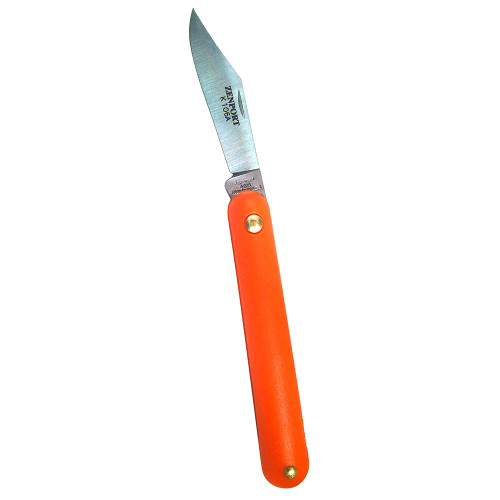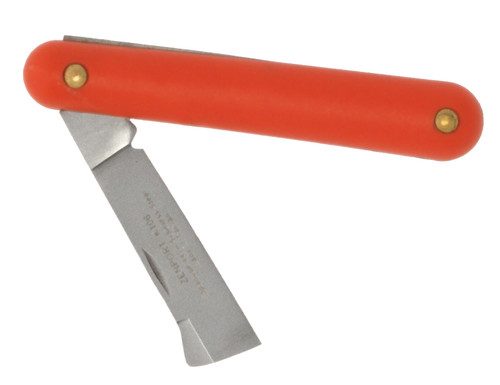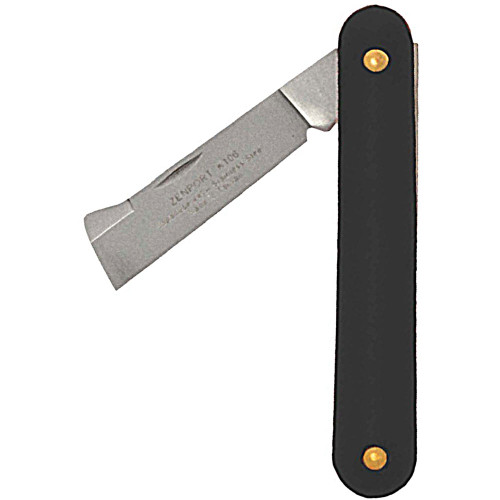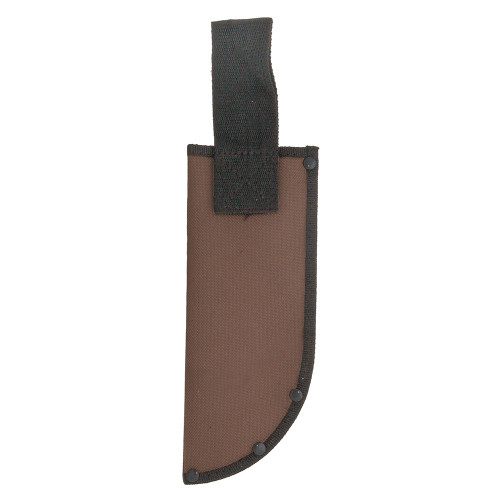Product Overview
This 7.87 x 1.18-inch (200 x 30mm) Zenport grafting knife features a 3.15-inch (80mm) stainless steel blade for grafting trees and vines. Blades cutting edge measures 2.45-inch (62mm) long. The blades cutting surface angle and unique shape works awesome for grafting and budding techniques used to join two parts of a plant so that they grow together and appear as a single plant. Includes a clear plastic sheath which can be attached to your belt.
Features a 4.72 x 1.18-inch (120 x 30mm) bright red non-slip grip plastic handle that is easy to identify if left out in the field. The blade is made of stainless steel making the knife easier to be sanitized which increases the likelyhood for a graft to take.
Reasons for grafting and budding:
- Perpetuate clones. Clones of numerous species cannot be economically reproduced from vegetative cuttings because the percentage of cuttings that root successfully is low. For example numerous clones of Japanese maple that either root poorly or lack an extensive root systems are grafted onto the seedling of an Acer palmatum rootstock.
- Take advantage of particular rootstocks. Certain rootstocks have superior growth habits, disease and insect resistance, and drought tolerance. For example the French crabapple can increase resistance to crown gall and hairy root in apple trees.
- Increase the growth rate of seedlings. The seedling progeny of many fruit and nut breeding programs may require 8 to 12 years to become fruitful. However, if these progeny are grafted onto established plants, the time required for them to flower and fruit is reduced dramatically.
- Repair damaged plants. Large trees or specimen plants can be damaged easily above the soil line. The damage can often be repaired by planting several seedlings of the same species around the injured tree and grafting them above the injury.
- Change varieties or cultivars. Newer varieties of trees may offer improved insect or disease resistance, better drought tolerance, or higher yields. As long as the scion is compatible with the rootstock, the older orchard may be top worked using the improved variety or cultivar.
- Produce certain plant forms. Numerous horticultural plants owe their beauty to the fact that they are grafted or budded onto a standard, especially those that have a weeping or cascading form.
- Optimize cross-pollination. Certain fruit trees are not self-pollinating; they require pollination by a second fruit tree through cross-pollination. To ensure good fruit set on the female (pistillate) plant, a male (staminate) plant must be growing nearby. Where this is not possible, the chances that cross-pollination will occur can be increased by grafting a scion from a male plant onto the female plant.
Unlike budding, which can be performed before or during the growing season, most grafting is done during winter and early spring while both scion and rootstock are still dormant.







